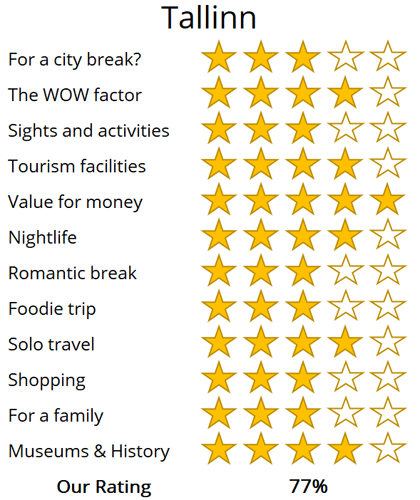WhereToGoForMyHoliday.com
The best destination comparison site!
WhereToGoForMyHoliday.com
The best destination comparison site!
Berlin or Tallinn a vs city comparison and travel guide
Berlin and Tallinn both offer unique and enticing experiences, but which one should you choose for your city break or holiday?
We understand your dilemma. There is an abundance of travel guides for both cities, but few actually comparing them, and advising you which is the better for your trip.
This article will provide our unbiased and independent views of Tallinn and Berlin, hopefully making your choice that little easier.
The article is structured into several sections, each of which can be directly accessed through the following links:
• Introduction to the cities
• Scores and ratings
• Which one should I, friends, or family visit?
• When to visit and weather
• Who is the city suited for?
• The perfect 48hours (with map)
• Tourism details (where to stay? airport details?)
Introduction to Berlin and Tallinn
Berlin is a city of thrilling contradictions. Traces of its turbulent past - fragments of the Berlin Wall, stark WWII monuments - remain visible. Yet gritty street art and highbrow museums coexist with beach bars and underground clubs in this dynamic, multicultural capital.
This dynamic city seamlessly fuses new and old, with leafy parks neighbouring modernist architecture and historic boulevards lined with cutting-edge galleries. Cosmopolitan yet complex, Berlin rewards those eager to delve beneath its myriad cultural layers.
You could be forgiven for thinking you'd been plucked from the 21st century and dropped back in the 1300s when you step foot in Old Town Tallinn. Cobblestone lanes braid their way through stooped taverns with drooping roofs, chimney stacks, and grey stone keeps that echo The Lord of the Rings.
Aged Toompea Hill is the anchor of it all, erupting above the capital with its muscular castles and onion-domed churches. Below, the Lower Town buzzes with energy, pitting beer bars next to Baltic eateries and church steeples.
Tallinn has also established itself as one of Europe's most cutting-edge cities in recent years. It's a digital powerhouse with start-ups and creative agencies galore. They fuel areas like Kalamaja, which is all roaster coffee joints in Soviet tenements and funky bars in rundown prisons that spill into the Baltic Sea, proving it's not all about the history in these parts…
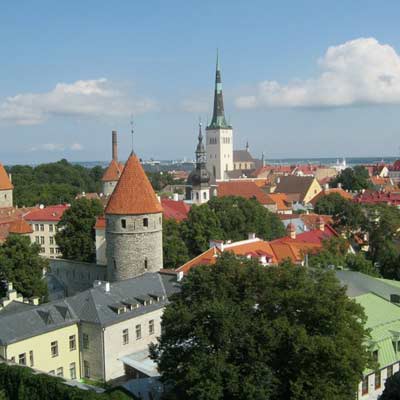
Medieval towers dominate the skyline of central Tallin

The TV tower (Berliner Fernsehturm) at Alexanderplat dominates the skyline of Berlin
Berlin vs Tallinn: City Ratings
Summary
Where would I journey for a personal escape?
Tallinn
Where would I send my parents for a memorable visit?
Berlin
Where's the ideal destination for my adventurous 19-year-old cousin?
Berlin
Where should my food-obsessed friend indulge their culinary passions?
Berlin
Note: The above comparisons are weather-independent and are based on travel during the most opportune times of the year. Details about the ideal travel seasons are elaborated upon later in this article.
In the sections that follow, you'll find a comprehensive comparison between these two fascinating cities. This includes recommendations on the duration of stay, the best times to visit, and tailored 48-hour itineraries for each city.
The final segment delves into practicalities for your travels, such as the best airport to fly into, the optimal districts for your accommodation, and insider tips, for when you come to explore the city.
We hope that you find all of this information useful, in planning your next exciting trip!
Destination details
How long to spend each city?
Tallinn might not be the biggest European capital, but it's a place that always seems to have another secret up its sleeve. Yes, two days might be enough to see the old city walls, wander Toompea Hill and sample the delights of the Estonian kitchen, but there's certainly enough to fill trips of four, five or even more nights.
Have a think about what you're after from your travels and then decide. If you're eager to squeeze in a few nights on the town (a good shout, as Tallinn is downright hedonistic), daytrips to the wonderful forests and coast swamps of Lahemaa, and a couple of the museums, you'll probably want to give yourself some extra time.
Berlin is one of those vibrant metropolises that always seems to have something new to discover on each visit.
You could easily spend months here and not do everything you want. That's really a result of just how big it is – more than 3.5 million people call it home, and it's the largest city in Germany by a long shot.
That said, a weekend or a three-day break is often ample for a whirlwind tour of the capital's most iconic points of interest.
The ultra-efficient U-Bahn, tram and buses make it easy to hop around the city, and fortunately, the main attractions are relatively close together; woven into the blocks of Mitte, Wedding and hipster East Central.
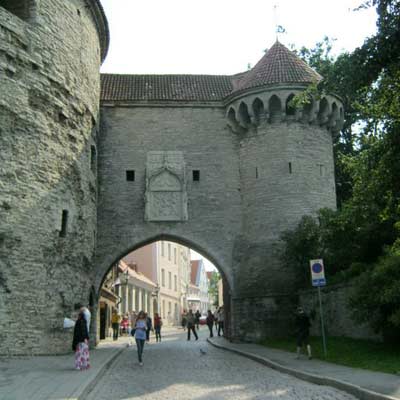
The Suur Rannavärav (Great Coastal Gate) protected Tallinn from seaward invasion

Berlin is a city that lives for it’s nightlife……
It's simple: Spring to summer for Berlin.
From May to October, the locals of Berlin seem to come out of their winter hibernation, and the city is in full swing. However, in the summer expect high temperatures where the mid-day heat can easy be over 30C.
If you can handle the cold, snow and greyness, then Berlin is almost free of tourists in the winter. December in Berlin is rewarding, with enchanting Christmas markets at the Charlottenburg Palace and on Alexanderplatz.
The summer is considered to be the finest time in the Tallinn. From around May onwards, the temperature picks up to the high teens and early 20s, there's more sun, and the days are longer. From June onwards, the travellers and the crowds come, lending a buzz to the bars of the Lower Town.
There's no question that Tallinn looks downright gorgeous under plumes of snow in the midwinter. Some say it's the most enchanting time of all, as the nights draw in and there's ice glinting like diamonds on the roofs of the old churches. On the main Town Hall Square, you'll also be able to enjoy the delights of the Tallinn Christmas Market from early December onwards – think handmade Estonian decorations, hot wine, and traditional pastries. Don't expect to be warm, though. The Baltic gets sub-zero and bitter winds all throughout the season.
If you're keen to go a little off the beaten path and discover somewhere laced with rich history and culture, Tallinn is beckoning. With more and more low-cost flights now serving the local airport, a trip to this north-eastern corner of the continent isn't the chore it once was.
So, anyone eager to ditch the mainstay cities of Western Europe is in luck. Adding to that is an Old Town that's been called the best-preserved medieval quarter in the world, so there's loads for fans of original architecture and atmospheric neighborhoods.
Being so far north means there's nothing like the warmth of the Med or southern Europe up in these reaches of the Baltic. Yes, the summer months can get hot and the sea is only a stone's throw from the city, but Tallinn is hardly a beach destination.
Also remember that this is a small capital by global standards. It's certainly not the pick for anyone on the hunt for a colossal, electrifying metropolis.
If you're a city slicker with a soft spot for cool cafes (aka the coolest in Europe), great coffee, ethnic eateries, and urban vibes, then Berlin is arguably the place you should be for the rest of your life!
This is the epitome of a metropolis made up of individual neighbourhoods. Each has crafted its own unique character; some are hedonistic, others laid back and easy going, others packed with famous landmarks.
Those who want fresh air can escape to the Tiergarten and the beautiful Spreewald, but those are just supporting acts to the buzz of the downtown. It's not the place to be to attune yourself to nature, relax under the sun, or have swims in the sea.

The Bode Museum standing on the banks of the Spree River on the Museum Island (Museumsinsel), the cultural centre of Berlin
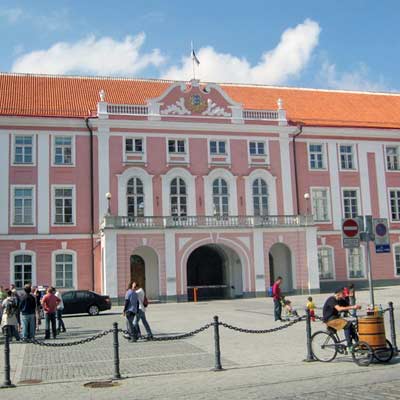
The Baroque wing of the Toompea Castle, is also the parliament building for Estonia
48hours in Tallinn
Wander the Lower Town, see Russian-style cathedrals, taste medieval broths in immersive eateries, gaze at the frothing Baltic waves, duck under ancient fortification walls – all that and more should be a part of any two-day itinerary for the Estonian capital…
Day 1: The Town Hall Square (Raekoja plats) at the very core of the city is always the perfect place to begin. Go there and the sightseeing will start immediately. The eponymous Town Hall itself is the main attraction. It's a beautiful 36-meter structure with a tower that's topped with the Old Thomas weathervane, now a symbol of the city. You're also at the perfect starting point to get lost in the Lower Town of Tallinn.
That's the largest part of the historic center, a UNESCO site, and the place where merchants and guilds would once have plied their trade. Viru Street is one not to miss within. It's a hubbub of shops and eateries, all leading to the handsome Viru Gate, which dates all the way back to the 14th century. A whisker to the north is the Hellemann Tower, offering travellers access to a high lookout point and a 200-metre stretch of the City Walls.
Once you're back on dry ground, delve into the Lower Town once again, going north via Pikk Street. At its end you'll emerge into the hipster area of Kalamaja. Boho coffee shops and Mexican eateries combine there, but the best way to spend the evening is in the block behind Tallinn's train station, where industrial-chic cocktail bars like St. Vitus mix up creative long drinks.
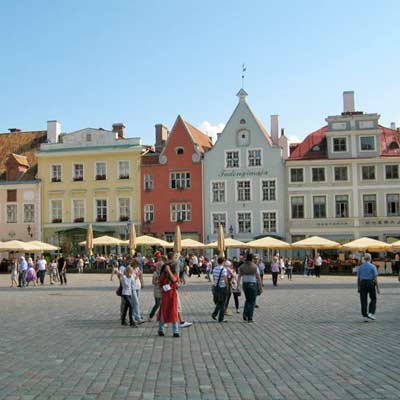
The Raekoja plats plaza is at the heart of Tallinn
Day 2: The early hours see you head above the Lower Town to Toompea Hill. Once the main keep and most fortified part of the historic city, it's still one of the most important postcodes in Estonia. On one side is the soaring Alexander Nevsky Cathedral, sporting onion domes and filigrees that evoke the Russian Empire.
On the other is St Mary's Cathedral, the oldest in the city. This is also the home of the modern Parliament of Estonia. On sunny days, the views across the historic town from Kohtuotsa are some of the best going, taking in the Paks Margareeta tower in the distance and Town Hall Square below.
Descend from Toompea and go back to the centre to find the immersive tavern of III Draakon. A fun-filled character pub, it's got food that mimics the diet of the 1400s and curt service to match. As evening draws in, pinpoint the nightlife hubs of Rataskaevu and Voorimehe for something a little hedonistic!
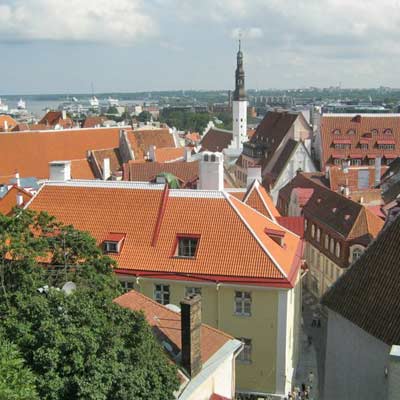
The view over the historic centre of Tallin
48hours in Berlin
Does the perfect 48 hours in Berlin even exist? With so many museums and vibey neighbourhoods to get through, it's hard to pack the highlights of the German capital into just two days. Still, the Berlin itinerary below gives it a go, offering everything from ancient Greek artefacts to cool pavement drinkeries and more.
Day 1: Morning in Mitte. As its name implies (Mitte = Middle), it's the hub of Berlin. You can settle in for a refined breakfast in the hidden courtyards of the Hackescher Höfe. The area is brimming with independent boutique stores and elegant tearooms. A few steps to the south take you beneath the needle-like Berliner Fernsehturm. A relic of Communist times, it's home to the fastest elevators in the world, while the lookouts at the top have jaw-dropping panoramas of the city (tickets cost €16.50).
A quick people-watching session on bustling Alexanderplatz and then move west to Museum Island. Culture vultures should take their time here. The Pergamonmuseum is a real highlight, with its priceless Assyrian statues and even the blue-tiled gates of Babylon. A pitstop at the nearby German Historical Museum is one for those who want to unravel the tale of the nation, with particular highlights in the collections that chronicle the world wars of the 20th century.
From there, walk down Unter den Linden to encounter the main artery of Mitte. That takes you to the world-famous Brandenburg Gate, which stands next to the glass-domed Reichstag Building. A picnic lunch in the Tiergarten park can be followed by a sobering walk through the Memorial to the Murdered Jews of Europe. Past that is Checkpoint Charlie – a onetime gateway between East and West Berlin – and then the lively streets of Kreuzberg, with their ramen restaurants, jazz bars, and multicultural kitchens.

The mock gothic Oberbaum Bridge connects the eastern and western sides of Berlin and is prominent icon of the city’s unity.
Day 2: If you're lucky enough to escape a hangover courtesy of the Kreuzberg bars, then an early morning start in the area of Friedrichshain is in order. It's brimming with graffiti-scrawled coffee bars and breakfast joints.
On the south side of the district is the striking East Side Gallery. Once a bland concrete section of the Berlin Wall, it's now an artist's homage to the fall of the great divider in 1989. From there, go north to the green lawns of Volkspark Friedrichshain. Chilled and leafy, it's actually the oldest public garden in the capital. And it's got monuments to the Spanish Civil War next to volleyball courts and picnic tables.
Hugging that is the enchanting area of Prenzlauer Berg. This is the perfect place to end your 48 hours. It's not bursting with sights and attractions, but it's got a classic Berliner neighbourhood vibe. If you're unsure where to begin, check out Kulturbrauerei – an all-in-one complex of cinemas, theatres, clubs and beer halls.

The Victory Column stands at the centre of Tiergarten Park, and at the viewing platform 285 steps up provides some of the finest views over Berlin
Tallinn Airport is small, but it's served by low-cost carriers coming in from Scandinavia, Russia, and Western Europe. It's only a few miles from the Old Town, and the trip can be done on bus number 2 or with a private taxi – expect to pay in the region of €7-11 for that. Other travellers might come across the Baltic on ferries from Helsinki. They cost about €20 and go several times throughout the day from the port in Finland.
For hotels, the ideal location is the Lower Town. Generally speaking, the closer you get to Town Hall Square, the pricier the establishments become. But you might not even want to be there – it's buzzy and loud. The streets further north and east are laced with other B&Bs and even hostels and are still within walking distance of the monuments. The areas of Tonismagi and Tatari are good alternatives if you're really looking to keep costs low.
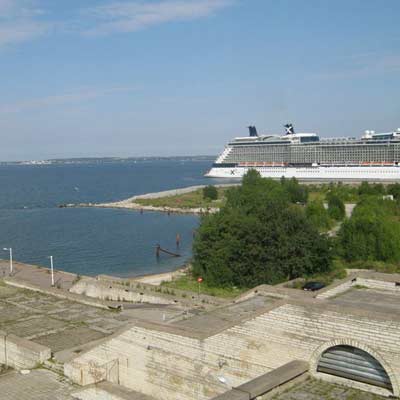
The ferry terminal in Tallinn
Tallinn is a very safe place to travel. It's got low crime rates, and, aside from the ubiquitous pickpockets and taxi scammers, there's rarely any serious issues. Some people have reported extortion scams in nightclubs, but that tends to be limited to the more unsavoury establishments that we think it's best to avoid anyway.
Tallinn is pretty compact and small for a European capital. It's long since burst the seams of its old core, but most of the main sights, bars, pubs, cafés, and museums are still hemmed in by the medieval walls. That means you'll usually be able to walk pretty much anywhere you want. Just be wary of cyclists in the narrow Lower Town streets and icy cobbles in the winter months. Both can be dangers.
If you're arriving on a low-cost airline to Berlin, then it's likely you'll jet into the old GDR hub of Schönefeld Airport. That's in south-east Berlin. Reach it on regional train lines or via the S-Bahn, which go directly to a station in front of the terminals. Tickets cost €3.40 each way.
The larger Tegel International Airport is where most premium carriers like Lufthansa and BA will land. If you're going there, you certainly don't want to take the train to Tegel – that won't get you into the heart of Berlin. Instead, choose the frequent bus link to Hauptbahnhof or Alexanderplatz. The fare is €2.80 € and journeys take between 35-50 minutes depending on traffic.

The Berliner Dom cathedral, with its 100m high dome and grand Neo-Renaissance architecture
Getting around Berlin is a cinch. The capital has a super-efficient and well-linked public network of trams, trains and underground lines. You can purchase tickets at any S-Bahn or U-Bahn station, or at any establishment with a BVG sign. Daily and weekly passes for all public transportation are also available with slight reductions. A new smartphone app allows digital purchasing of tickets (search: FahrInfo Plus). All other tickets must be validated before use.
Violence of any sort in the capital is rare and police can be relied upon. Still, have your wits about you, especially if travelling through Berlin's lesser-known or rougher areas, like the ones bordering Kreuzberg, or the nightlife hubs of Alexanderplatz and Friedrichshain.
When it comes to searching for a hotel, there's a hard choice to be made. There are oodles of neighbourhoods here that are worthy of attention. It's really up to you to decide what you want. Generally speaking: Sightseers can't go wrong in Mitte, Kreuzberg and Friedrichshain are perfect for bar hoppers and foodies, and Neukölln offers something more local.

oh we were stuck in the airport!

Copenhagen was a bit expensive...

All we did was drink beer in Brussels...

Muncih was crazy

And we got so burnt!

Remeber that night in Rome

oh we were stuck in the airport

So much fun kayaking

Berlin and that group from Austria!

There was such a view from that church

And we got so burnt!

Munich was eventful, wasn't it!

Such a view from that cathedral in Florence

Lisbon was such so much fun

Last summer was so much fun .... x

Remeber that night in Rome

Lisbon was such so much fun

Such a view from that cathedral in Florence

Munich was eventful, wasn't it!

And we got so burnt!

Remeber that night in Rome

All we did was drink beer in Brussels...

Berlin and that group from Austria!

Can't wait to go back to Dubrovnik

Remember that boat ride in Prague

Copenhagen was a bit expensive...

